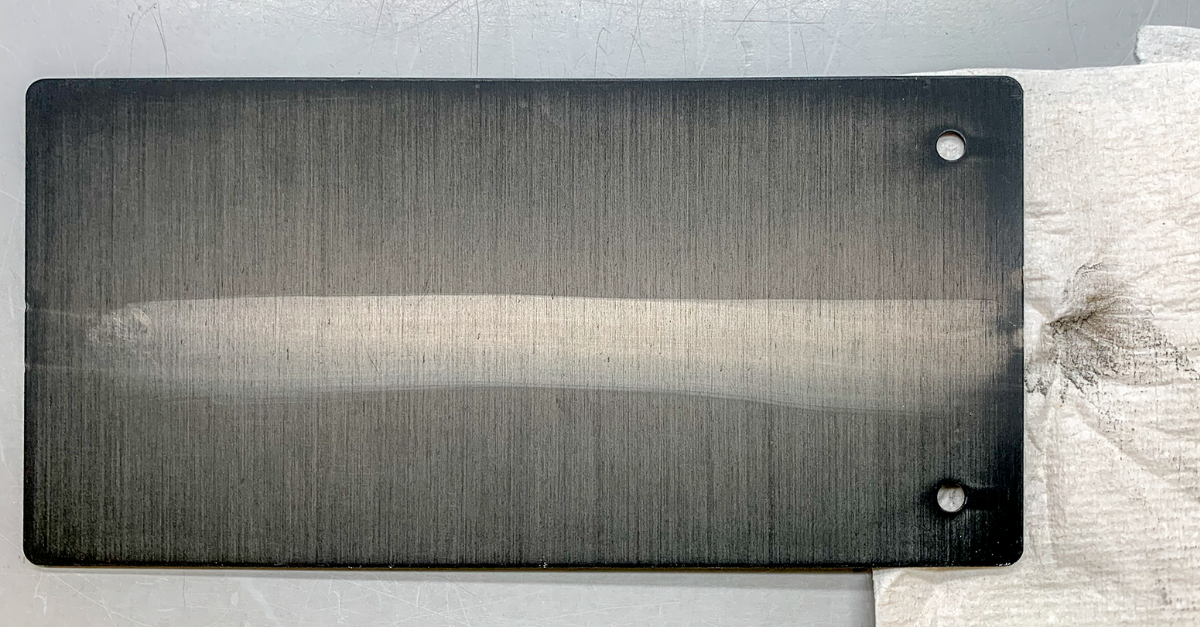On anodised, electrolytically black-coloured and hot-sealed aluminum we see deposits - what could that be? After hot sealing, deposits are often visible on anodised and coloured surfaces, which are then quickly classified as so-called " sealing smut". However, if closer inspection reveals that all sealing conditions were in order, the search for the possible defect continues.
What is behind the deposits on anodised and coloured surfaces?
A look at the conditions in the colouring bath usually helps here. If there is "too much" colour on the black-coloured surface, depending on the amount deposited, this will also lead to a visible deposit on the finished part. "Too much" colour means that metallic tin is deposited on the surface above the pores and remains there as a residue/deposit.
How can we imagine the formation of deposits?
Hot sealants are complex formulations and designed to remove exactly the amount of boehmite (AlOOH) that swells out of the pores on the surface during the normal hot sealing process. This typical "sealing smut" is thus completely removed from the surface if the hot sealing bath is set correctly. The result is a smut-free surface. However, if additional residues/deposits are added due to "too much" colour on the surface, the hot sealing bath is simply "overtaxed" with the amount of residues now.

Electrolytically black coloured surface - extremely over-dyed
How can I check whether the deposit has formed in the electrolytical colouring bath or hot sealing bath?
If the material was electrolytically coloured black (tin based), you can wipe heavily with a white towel over the complained product. If you see grey or dark residues, this indicates that the material has been over-dyed. Metallic tin deposits above the anodised pores have settled and form the dark residues.
What measures could be taken to try to solve the problem?
One opportunity is to check whether an improvement is possible by using a higher concentration of hot sealant. Depending on the product used, such an overdose can have a positive effect on the removal of deposits, but also a negative effect on the weight loss test results according to DIN EN ISO 3210 on the finished product. This must therefore be checked accordingly. In addition to the above-mentioned measures, it is better to combat the actual cause.
To do this, you can try to eliminate the problem in the colouring bath by gradually reducing the treatment time without changing the colour from black to dark bronze. The bath conditions in the colouring bath can also be decisive:
Are the tin sulphate content and sulphuric acid content correct?
Are they in the right ratio to each other?
Has the bath temperature changed?
Has the bath been activated/optimised in the meantime, e.g. by increasing the stabilizer content?
Are there other influencing variables besides the colouring conditions?
The problem can also be caused by changed conditions during the anodising process, which influence the pore structure of the layer. If the anodising pores are narrower than usual and the colouring conditions (colouring program) are then maintained, too much colour can be deposited on the surface. If the colouring time remains the same, less tin will be deposited in the now narrower pores and the excess will show up as a deposit on the surface. When troubleshooting, one should therefore also keep an eye on the anodising conditions (such as current density, temperature, sulphuric acid concentration).
